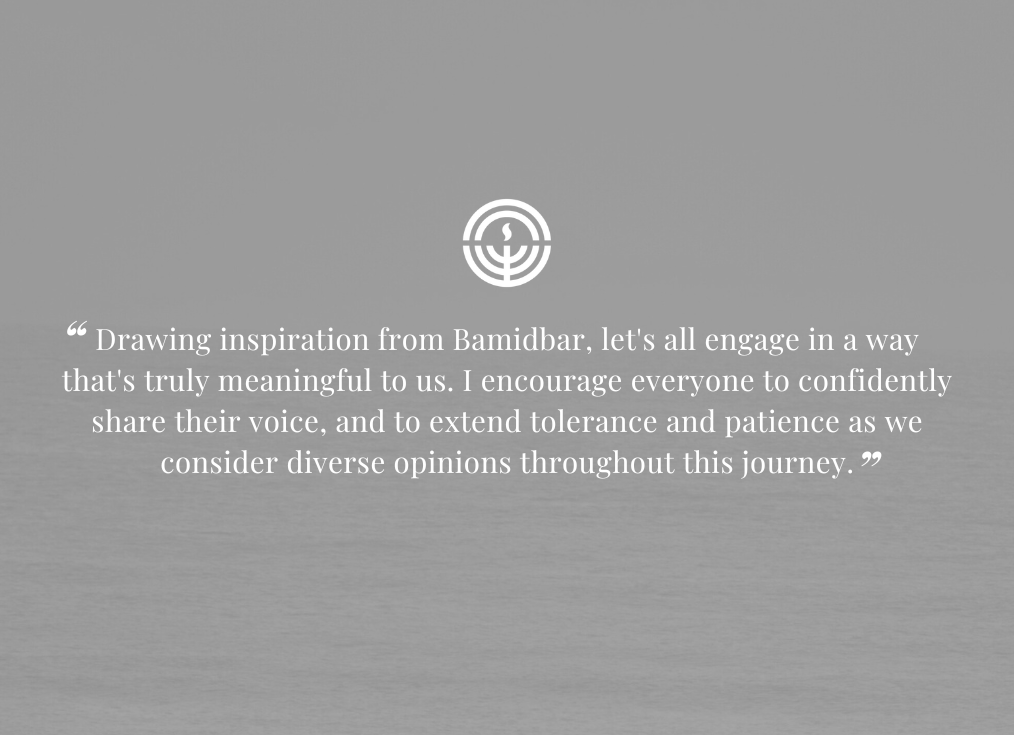A Journey We All Share

Parshat Bamidbar, the opening of the Torah’s fourth book, might initially seem like a dry administrative report. It details a meticulous census and precise instructions for camp arrangements. Yet, within these seemingly bureaucratic accounts lies a profound lesson: Bamidbar reveals how structure and process transformed a group of enslaved individuals into a cohesive nation ready for its destiny.
…
For generations, the Israelites endured lives defined by forced labor and disorganization in Egypt. They were a suffering mass, with no shared purpose beyond survival, and a distinct lack of individual responsibility. Their existence was dictated by their oppressors, leaving no room for communal order or collective identity.
Bamidbar marks a pivotal transition. No longer fleeing in haste, they now encamp at the foot of Sinai, preparing for a monumental journey that will test their faith and endurance as a people. The very first divine command issued is for a census. This is more than just a headcount; it’s a profound act of individuation and integration. Each man is counted by name, tribe, and family, instilling a sense of individual worth and belonging utterly absent in their enslaved lives. For the first time, each person is recognized as a vital component of a larger whole, no longer an anonymous cog in Pharaoh’s machine. The meticulous layout of the camp, a divine blueprint for communal living, further solidifies this order, replacing chaos with purposeful design.
Bamidbar vividly demonstrates that the transition from a collection of individuals to a functioning nation isn’t solely about shared history or a common destiny. It is fundamentally about establishing effective structures and clear processes. Without this framework, even a people miraculously freed from bondage could easily flounder in disorganization and internal strife.
The ancient wisdom of Bamidbar speaks powerfully to communities like ours today, especially as we consider significant structural changes, such as those envisioned in Project Mazel, or leadership transitions within the community. Whenever a community embarks on a journey of re-evaluation or organizational overhaul, particularly during leadership changes, it’s natural for anxieties to arise concerning the unknown and a potential loss of individual agency.
However, just as in Bamidbar, a well-conceived process of change can be an unparalleled opportunity to re-affirm both the individual’s value and their personal responsibility within the collective. By clearly defining roles, establishing transparent processes that actively invite and respect diverse perspectives, and articulating a shared vision, a community empowers its members, moving them from a state of passive participation (or even resistance) to active, responsible engagement. Each member, understanding their unique contribution to the new framework, takes ownership of their part, fostering a culture where individual initiative and collective success are inextricably linked.
Drawing inspiration from Bamidbar, let’s all engage in a way that’s truly meaningful to us. I encourage everyone to confidently share their voice, and to extend tolerance and patience as we consider diverse opinions throughout this journey.
Shabbat Shalom
Joe Patrick
Vice Chair of Community Planning and Allocations, Jewish Federation of San Antonio
